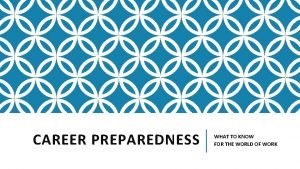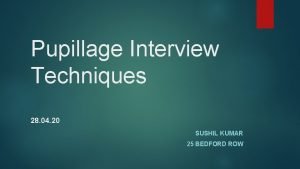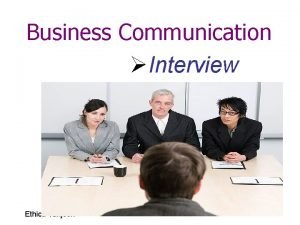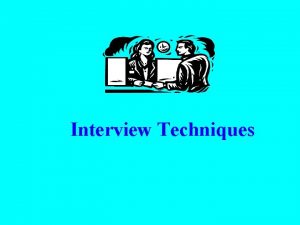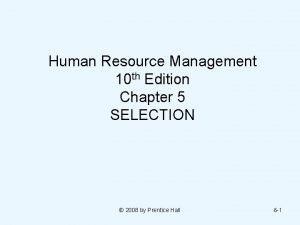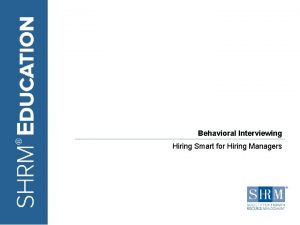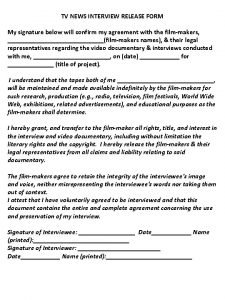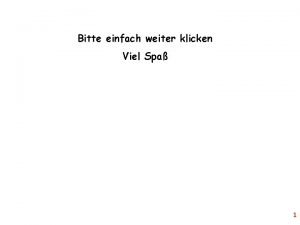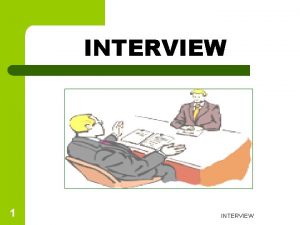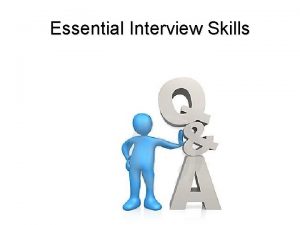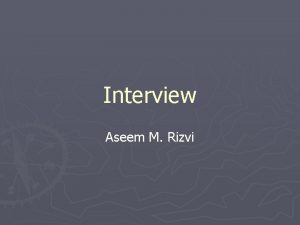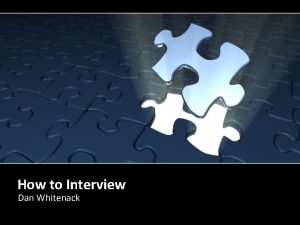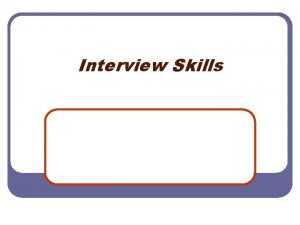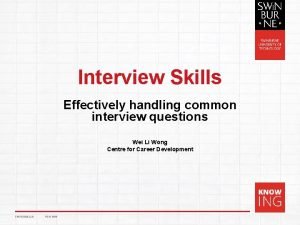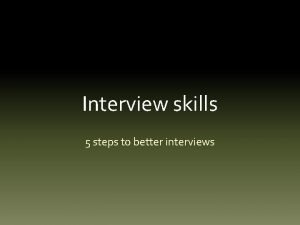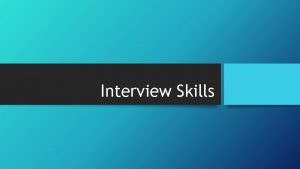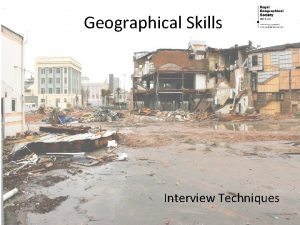INTERVIEW SKILLS What is an Interview An interview
















- Slides: 16

INTERVIEW SKILLS

What is an Interview? An interview is a conversation between two people (the interviewer and the interviewee) where questions are asked by the interviewer to obtain information from the interviewee

Contd. • Interview is a mutual exchange of information between employer and employee (likely to be) • An interview is a meeting between a job applicant and a representative of the company. The meeting comes about because the company had a job available. People applied for the job. The company needs to decide who to hire

Purpose of an Interview • Give employer a chance to get a good look at you • Employer can ask you questions about the candidate’s work experience • Employer get an opportunity to see if the candidate would fit in

Contd. • Supplement résumé information • Show that you understand your strengths and weaknesses and have a sense of direction • Enable the employer to evaluate your personality and attitudes in terms of the demands of the organization and the position

Contd. • Allow you to gain information about the organization and the job that is not available through other sources • Give you and the employer an opportunity to discuss the desirability of further contact or an offer of employment

Types 1. Individual/ One on One Interviews 2. Group Interviews 3. Panel Interviews 4. Telephone Interviews 5. Video Conferencing 6. The Auditions

1. Individual/One on One Interview It includes one candidate interviewed by one other person either by phone, via video, or in person 2. Group Interview In this interview format, one or more persons interview many candidates at the same time

3. Panel Interview In which one candidate is interviewed by more than one person at the same time 4. Telephone Interview It is conducted via phone to quickly or cost-effectively screen or hire candidates

5. Video Conferencing In this type of interview, recruiters use video technology to conduct interviews at a distance 6. The Audition Such Interviews include the demonstration of the abilities of candidates through some act or exercise before recruiters make some decision

Verbal & Non-Verbal Communication • Make eye contact with the interviewer for a few seconds at a time • Smile and nod (at appropriate times) when the interviewer is talking, but, don't overdo it. Don't laugh unless the interviewer does first

Contd. • Be polite and keep an even tone to your speech. Don't be too loud or too quiet • Don't slouch • Do relax and lean forward a little towards the interviewer so you appear interested and engaged

Contd. • Keep your feet on the floor and your back against the lower back of the chair • Pay attention, be attentive and interested • Don't interrupt; Listen • Stay calm. Keep your emotions to yourself and do not show anger or frown

Contd. • Don’t put anything on your lap • Speak clearly. Don’t use slanguage • Avoid frequent use of verbal fillers such as “um”, “uh”, “you know” etc. • Respond to questions specifically and concisely but give sufficient details

Contd. • Use courtesy markers like “thank you”, “I am honored”, “it’s my pleasure” etc. at appropriate times • Don’t leave the room without saying “thank you”

Thank You!
 Interview definition
Interview definition Careersafe interview skills answers
Careersafe interview skills answers Bedford interview skills
Bedford interview skills Interview skills in business communication
Interview skills in business communication Interviewing techniques definition
Interviewing techniques definition What is skill
What is skill Essential skills ontario
Essential skills ontario Intrapersonal vs interpersonal skills
Intrapersonal vs interpersonal skills Interview past
Interview past Taboo interview questions
Taboo interview questions Characteristics of properly designed selection tests
Characteristics of properly designed selection tests Formulas for career success interview preparation
Formulas for career success interview preparation Shrm behavioral interview questions
Shrm behavioral interview questions Interview release form
Interview release form Interview spa
Interview spa Leadership interview presentation
Leadership interview presentation What is your favorite book interview question
What is your favorite book interview question

